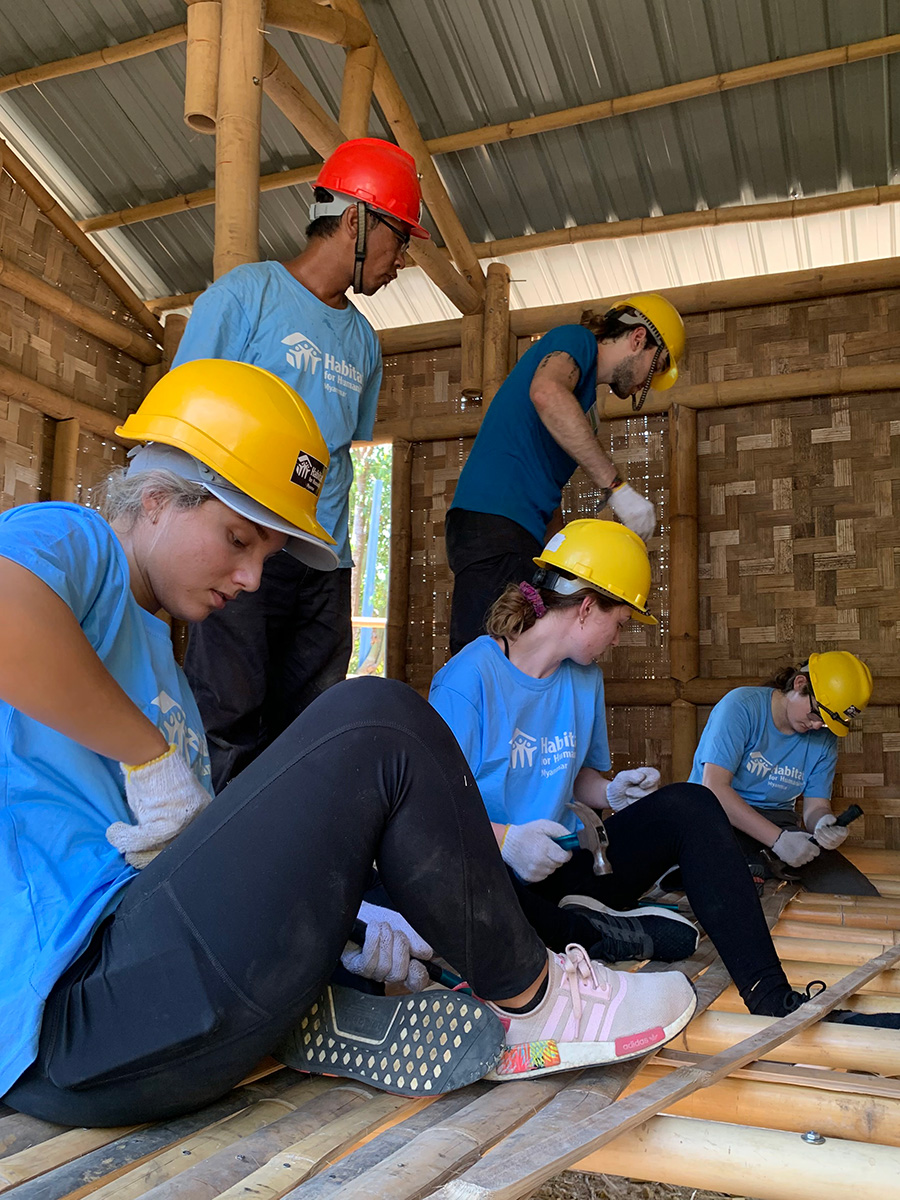What is Service-Learning?
Service-learning is an experiential learning pedagogy that moves students beyond the classroom to become active participants in their learning and develop civic knowledge and skills. Students who take service-learning courses work with local, national, and international non-profit and public organizations to deeply learn and practice course content by working on a real, community-identified need. Students learn the course material, get to work directly on an issue facing the community, and learn about their communities in the process. At Suffolk, service-learning pedagogy can be incorporated into any discipline.

As part of a service-learning course, students participate in direct, indirect, research-based, or advocacy-based service-learning projects (described below) on projects that address a multitude of issues. Some service-learning courses at Suffolk have included:
- An education course that has Suffolk students tutor in Boston Public schools, learning and practice teaching pedagogies they study in their courses.
- An environmental studies class that develops protocols that monitor water and sediment quality in Dorchester to learn about environmental sustainability best practices.
- A sociology class that provides service with local healthcare organizations, learning about the effects of current health care policy and how different populations experience the healthcare system in the United States.
- A public service class that researches resources, stakeholders, and programs that support local families to help improve their socioeconomic status. Students use their research to make recommendations to local organizations and community leaders on how the programs and stakeholders can be more effective.
- A creative writing class that teaches creative writing to students from low-income neighborhoods in the Boston area to better learn creative writing techniques and how to improve their local communities.
For Faculty: Want to learn more about how to incorporate service-learning into your course?
For Students: Want to learn more about how to take service-learning courses? Reach out to the Center for Community Engagement for a list of service-learning courses offered at Suffolk University, or search for service-learning courses by searching for “SL” under “Course Types” when you register for classes.
What is Service Learning?
Definition
Service-Learning
In 2015, the faculty of the College of Arts and Sciences and the Sawyer Business School approved the following service-learning definition:
"Service-learning is a pedagogy integrating academically relevant service activities that address human and community needs into a course. Students connect knowledge and theory to practice by combining service with reflection in a structured learning environment."
Modes of Service-Learning
Direct Service
Involves student engagement with the client population on an interpersonal level. The engagement is performed at the site of service. Examples of direct service include tutoring, reading to the elderly, coaching a youth activity in a low-income area.Indirect Service-Learning
Students fulfill a community need identified by a community partner without engagement with the client population. Examples of indirect service may include planning fundraising activities for a community organization, developing a social media strategy for a community action group, designing posters or flyers for a local nonprofit, building low-income housing, cleaning a community park.Research-Based Service-Learning
A type of service that involves collaboration with a community partner to conduct research that addresses community issues or needs. Partners may be nonprofit groups, government agencies or community leaders. Examples of community-based research projects would include testing water reports provided to a local community, auditing energy use in public housing, gathering data for a community grant application, gathering research that assists in the development of a video for a nonprofit or government agency.Advocacy-Based Service-Learning
A type of service where students create awareness or educate others on public topics that are of concern to the community partner and/or the greater community. Examples of this type of service would include planning and executing public forums that address community issues, writing and distributing information that illuminates a problem experienced by the community, helping to draft legislation that helps solve a community need, organizing a letter-writing initiative that addresses a social issue.
Delve, C.I., Mintz, S.D., & Stewart, G.M. (1990). Promoting values development through community service: A design. In C.I. Delve, S.D. Mintz & G.M. Stewart (Eds.) Community Service as Values Education. San Francisco, CA: Jossey-Bass.
Jacoby, B (2015). Service-Learning Essentials: Questions, Answers and Lessons Learned. San Francisco, CA: Jossey-Bass.



